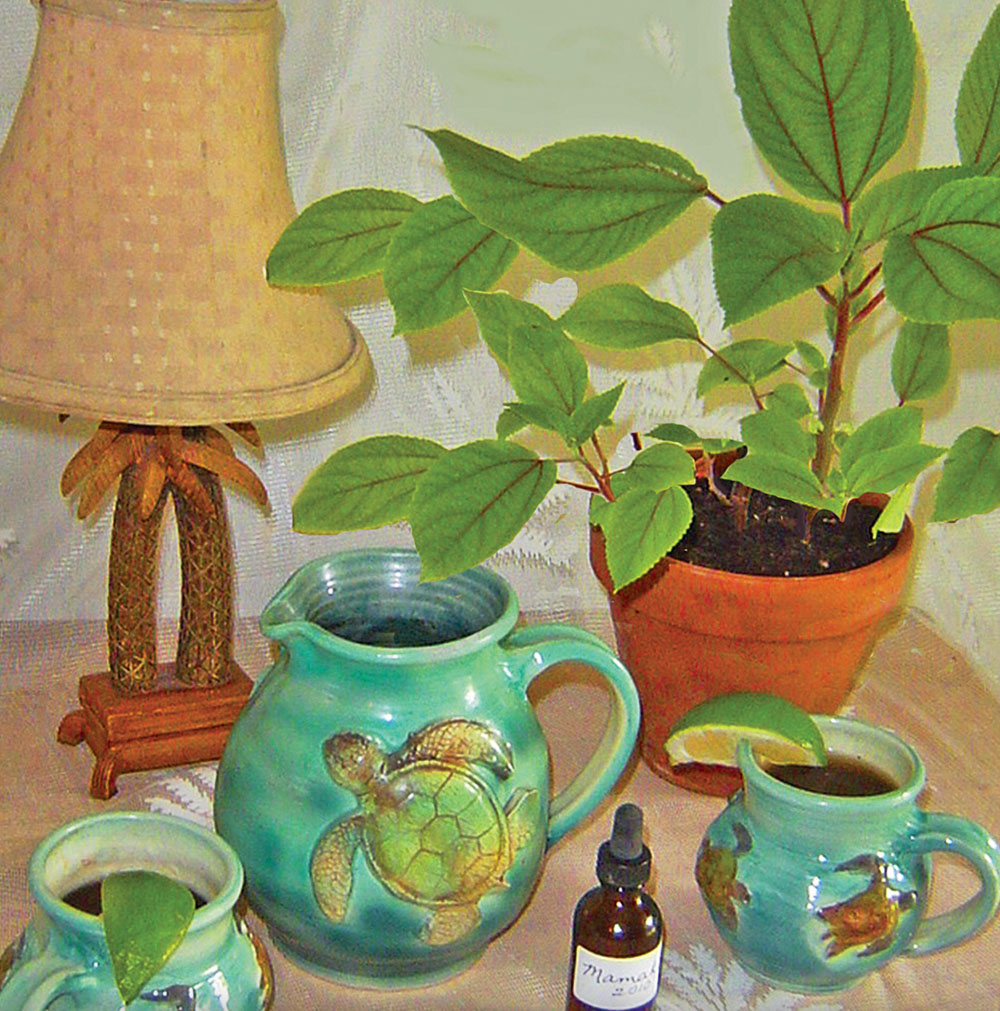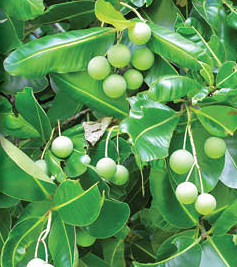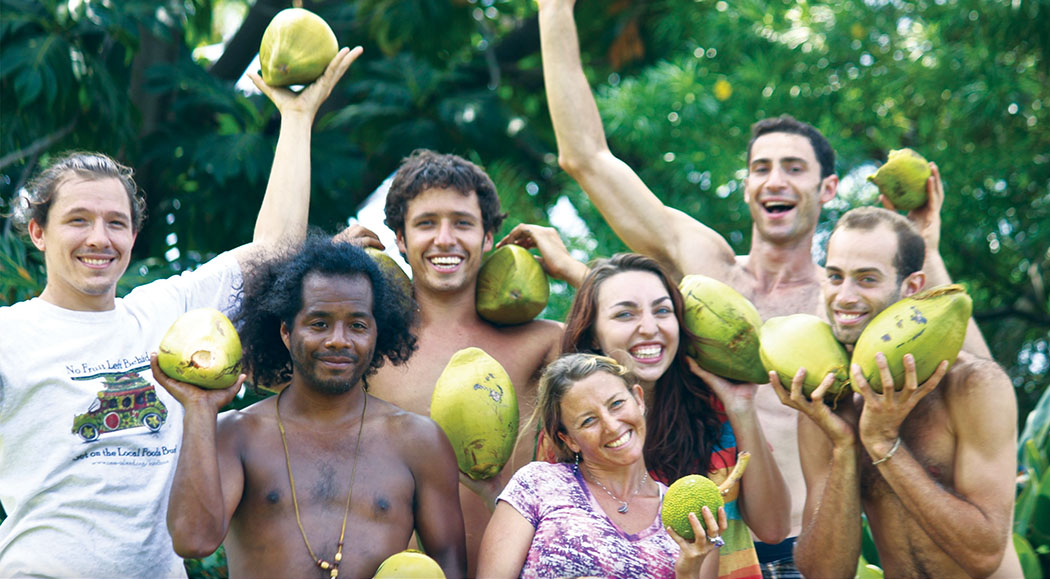
Healing Plants: Pia
 By Barbara Fahs
By Barbara Fahs
Haupia, the ever-popular coconut pudding dessert, has been a staple in Hawai‘i since World War II. If you have ever attended a lū‘au or a local style wedding, chances are you have eaten this gelatinous culinary confection.
Haupia is a simple combination of coconut milk, sugar, salt, and a thickening agent. Today, haupia is usually made with cornstarch. Traditionally, the dried and ground root of a pia plant was used.
Pia (Tacca leontopetaloides) is also known as Polynesian arrowroot. The early Polynesian voyagers brought pia tubers with them in their canoes, so pia is considered a “canoe plant,” or early Polynesian introduction. It’s uncommon in landscaping today, yet it is easy to grow.
Native Land
Botanists believe pia originated in Southeast Asia and spread to Polynesia via early eastern migrations. In addition to Hawai‘i, pia is found on Samoa, Tonga, Futuna, Niue, Tahiti, the Marquesas, the Cook Islands, and Tokelau.
Other species in the Tacca genus are found in tropical Asia, Australia, and Africa, where they are also used for thickening foods and as medicine for high blood pressure and hepatitis.
Traditional Uses
Residents of early Hawai‘i often grew pia next to streams or lo‘i kalo (taro ponds) because it thrives in moist environments. After harvesting the root, they grated and pounded it and added it to a calabash with water. The starchy material sank to the bottom, and the water was replaced each day for several days to reduce bitterness. The pulp was then spread on a flat rock in the sun. When dry, it was ground using a mortar and pestle until a powder was formed.
Medicinal Uses
In addition to its culinary function, pia was also an important remedy for intestinal ailments. Combined with ‘alaea (red Hawaiian clay), pia supplied iron to patients suffering from diarrhea and dysentery. It proved so successful that medical practitioners found it necessary to closely monitor their dosages in order to prevent constipation.
Pia was also mixed with clay and given to patients suffering from bleeding in the stomach or colon. Topical application was another use of pia. From umbilical cords of babies to sores, burns, and insect stings—pia was ground, made into a paste, and then placed on the problem area.
How to Grow Pia
Warmer windward gardens at elevations below 830 feet are ideal for growing pia as it seems to prefer warm, wet conditions.
Dig a hole about four-inches deep, insert a tuber, and then cover with soil. The rest is easy: it will sprout in the spring or summer, live for several months, form an unusual flower, and then turn yellow and die back. No fertilizer is required, and irrigation is only needed during prolonged dry spells. Harvest the tubers in winter, after the plant has died back.
Check with the Amy B. H. Greenwell Ethnobotanical Garden in Captain Cook for pia tubers.
Haupia
1 quart coconut milk
1/2 C sugar
1/4 tsp. salt
1/3 C shredded coconut
1/4 C water
1/4 C powdered pia root or cornstarch
Combine the coconut milk, sugar, and salt in a saucepan. Stir constantly over medium heat until the sugar and salt dissolve.
Reduce the heat to low, then add the shredded coconut and cook for about five minutes.
In a separate bowl, whisk 1/4 C water into the powdered pia root or cornstarch.
Pour the pia or cornstarch into the hot coconut milk mixture and cook until it thickens, blending constantly with a whisk.
When the mixture is smooth and thick—similar to the consistency of yogurt—pour it into a clean baking tray.
Cool to room temperature and then refrigerate until it’s cold.
Cut into 1-inch squares and serve on ti leaf-lined trays.
Photos courtesy Forest and Kim Starr.
Contact writer Barbara Fahs
Sources:
Amy Greenwell Garden: 808.323.3318
Dr. W. Arthur Whistler, Polynesian Herbal Medicine, 1992.
FoodNetwork
Polynesia


